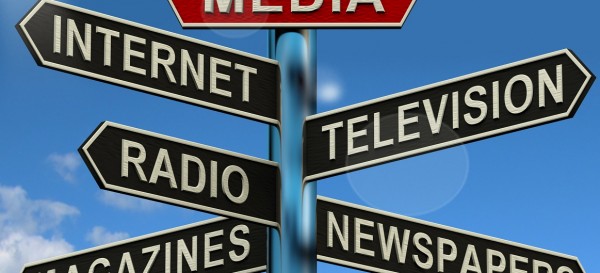Marketing and ad agency teams over-estimate the effectiveness of social media and online video, and under-estimate the effectiveness of press and radio, according to a recent report from Ebiquity, ‘Re-evaluating Media’ (1).
Below we look at some of the key results from this important piece of research and the implications for marketing planning.
1. What matters most for media?
The first part of the research identified the most important attributes in delivering a brand-building campaign, according to both advertisers and agency folk. Campaign ROI is up there at the top as you would expect, along with building salience which is key to create distinctive memory structure. The one area of possible concern is the much higher score given to targeting in relation to reach. Reach is key to drive penetration which in turn grows share.

2. What marketers think works
The second part of the research assessed how advertisers and agencies think each medium performs against the most important attributes.
Multiple reports on the enduring effectiveness of TV, including several posts on this blog, seem to have hit home, with this medium ranked top in terms of overall effectiveness. “TV still delivers huge audiences, it’s still one of the most responsive media…there’s no evidence that TV is dropping off in ROI,” commented one advertiser.
Close behind come the two sexy new channels of online video and social media, based on the following perceptions:
- Relatively cheapness
- Reach against a defined audiences
- Providing a measurable response
- Triggering emotion, especially for online video
In contrast, few respondents were positive about the effectiveness of newspapers and magazines.

3. What really works
The final and most important part of the research contrasted what marketers think works with an evaluation how each medium really performs on each attribute, with an average score calculated across all 12 attributes. This was based on a thorough and comprehensive review of published research and Ebiquity’s proprietary data.
TV was confirmed as the most effective medium.
However, advertisers and agencies over-rated the performance of online video and social media across the board. In reality, online investment under-delivers versus ROI expectations owing to issues with viewability, profit margins in the media supply chain and ‘non-human’ impressions by ‘bots’, according to analytics work by Ebiquity. “People are now waking up to the fact that it’s not delivering what it says it is,” commented one financial services advertiser. Accurate measurement of online media is made harder by the lack of a single, transparent and fully independent measurement tool verified by third parties.

On the other hand, marketers under-rated the effectiveness of newspapers, magazines and especially radio. These media may be less sexy, but still have a lot to offer brands. “Radio is such a personal medium. Reach tends to be in the home, which immediately gives it an emotional edge,” observed one advertiser. “Advertisers and agencies are also failing to recognise the cost effectiveness of radio and persist in believing social and online deliver the most cost-efficient reach,” according to Ebiquity.

4. Implications
Ebiquity suggest the following implications for brand owners:
Re-evaluate the media mix: There is strong evidence that digital advertising, especially online display, is not performing as well as other media such for long-term brand-building campaigns. This is at odds with the scale of investment in online advertising.
Targeting – getting the balance right: granular targeting can go too far and compromise reach, as P&G’s CMO Marc Pritchard said on scaling back Facebook spend: “We targeted too much, and we went too narrow.”
Be in control of programmatic: there are needs for greater accountability and transparency in programmatic trading. Brand owners need to exert more control on how they allocate, audit, and manage programmatic spend, vendors, data, and technology.
Digital media owners need to prove it works: traditional media have a robust body of research evidence to prove the medium works. It is in everyone’s interest to get a true perspective on the effectiveness of online advertising and build understanding of how to get the very best from each platform.
Creativity counts: a key theme running across the research is the need to strike the right balance between creatively integrating campaigns across media and optimising them for each platform.
In conclusion, we fully endorse the closing comments on Ebiquity: “To optimise advertising budgets, advertisers should avoid being seduced by trends and make considered media decisions based on evidence and proof of what works.”
Sources:
1.http://www.radiocentre.org/advertising/research/studies/re-evaluating-media/
